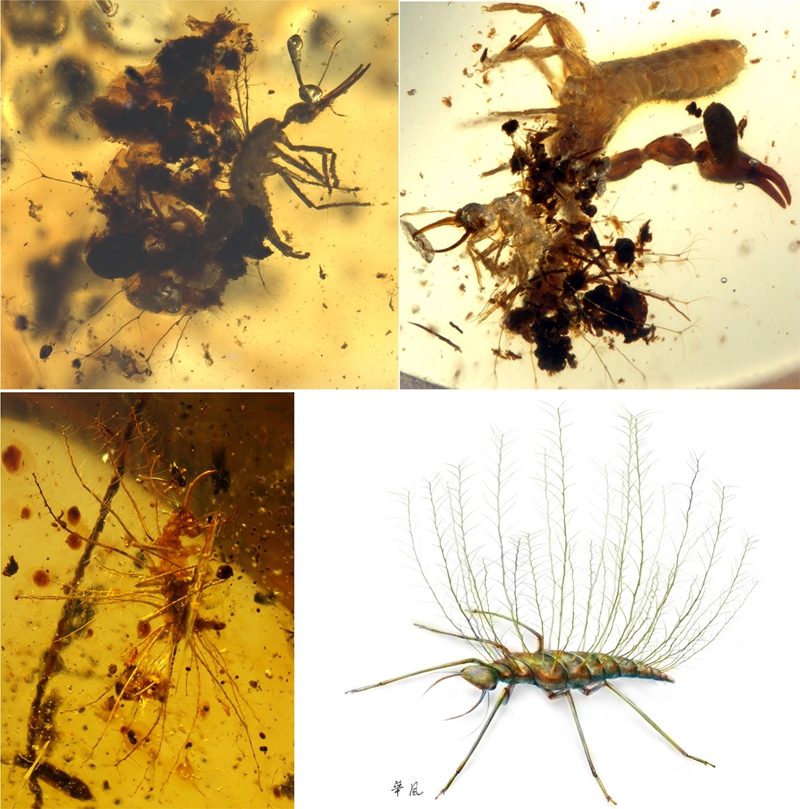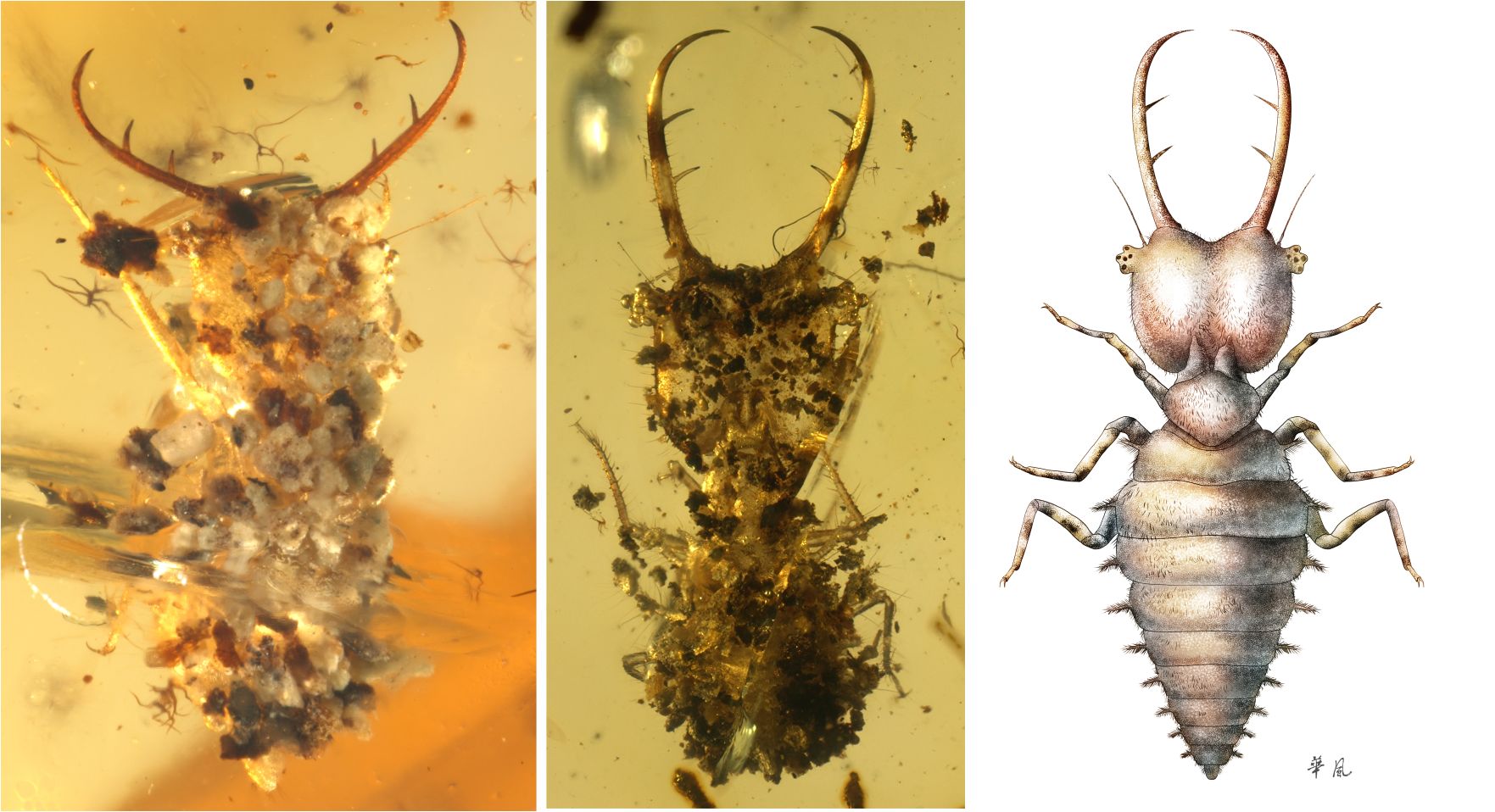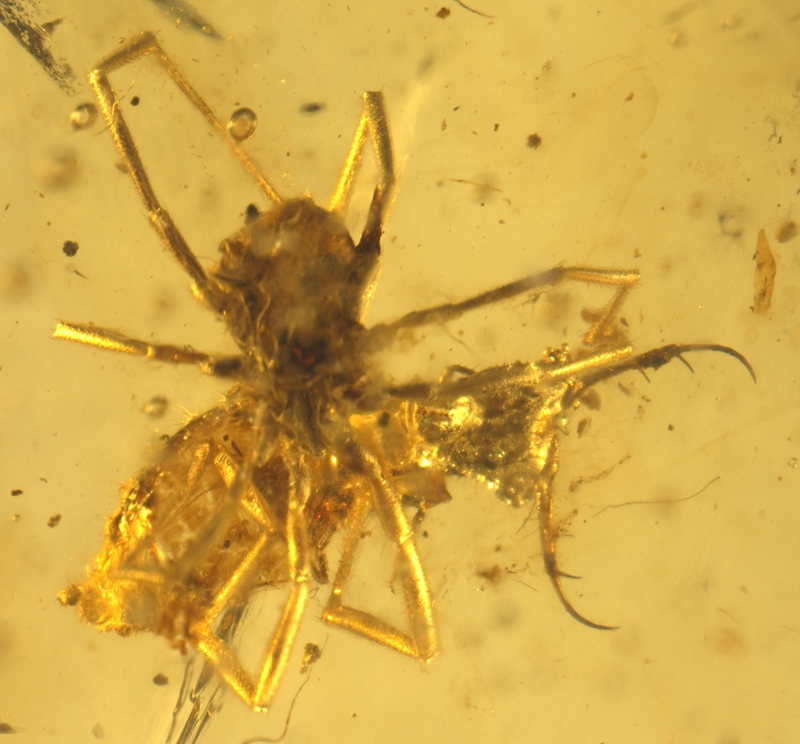
Chrysopoid larvae from Mid-Cretaceous Burmese amber (Image by WANG bo) and the reconstruction of naked chrysopoid larva (Image by YANG Dinghua)
Insects have evolved diverse types of camouflage that have played an important role in their evolutionary success. Debris-carrying, a behaviour of actively harvesting and carrying exogenous materials, is among the most fascinating and complex behaviours because it requires not only an ability to recognize, collect, and carry materials, but also evolutionary adaptations in related morphological characteristics.
The fossil record, however, of such behavior is extremely scarce, and only a single Mesozoic example from Spanish amber has been recorded previously; therefore, little is known about the early evolution of this complicated behaviour and its underlying anatomy.
Dr. WANG Bo from Nanjing Institute of Geology and Palaeontology, Chinese Academy of Sciences and his colleagues have now reported a diverse insect assemblage of exceptionally preserved debris carriers from Cretaceous Burmese, French, and Lebanese ambers, including the earliest known chrysopoid larvae (green lacewings), myrmeleontoid larvae (split-footed lacewings and owlflies), and reduviids (assassin bugs). The study has been published on Science Advances, on this Friday, 24 June 2016.
These ancient insects used a variety of debris material, including insect exoskeletons, sand grains, soil dust, leaf trichomes of gleicheniacean ferns, wood fibres, and other vegetal debris. They convergently evolved their debris-carrying behaviour through multiple pathways, which expressed a high degree of evolutionary plasticity.

Myrmeleontoid larvae from Mid-Cretaceous Burmese and French ambers
These fossils are the oldest direct evidence of camouflage behaviour utilizing trash in the fossil record and show unequivocal evidence of camouflage in immature lacewings and reduviids dating back more than 100 million years. They demonstrate that the behavioural repertoire, which is associated with considerable morphological adaptations, was already widespread among insects by at least the Mid-Cretaceous. These findings provide a novel insight into early evolution of camouflage in insects and ancient ecological associations among plants and insects.
Most Burmese amber lacewing larvae are preserved with dendritic trichomes produced by gleicheniacean ferns, and two chrysopoid larvae are carrying these trichomes, suggesting that these fossil lacewing larvae are closely associated with the habitats of gleicheniacean ferns.

Morphotype MII, dorsal aspect. Note that a spider is preying on the naked larva
Gleicheniaceae are important components of many Mid-Cretaceous floras worldwide, and are thought to be among the earliest colonizers after fire events. Therefore, the frequent occurrence of gleicheniacean trichomes in the Burmese amber is indicative of fire events during the time when the amber was deposited. This supports a relationship between fire events and the high production of plant resins and also highlights the importance of wildfires in Mid-Cretaceous pre-angiospermous ecosystems.
Reference: Wang Bo, Xia Fangyuan, Engel M.S., Perrichot V., Shi Gongle, Zhang Haichun, Chen Jun, Jarzembowski E.A., Wappler T., Rust J. (2016) Trash-carrying camouflage among diverse lineages of Cretaceous insects. Science Advances, 2: e1501918.
WANG Bo
Nanjing Institute of Geology and Palaeontology
E-mail: bowang@nigpas.ac.cn
